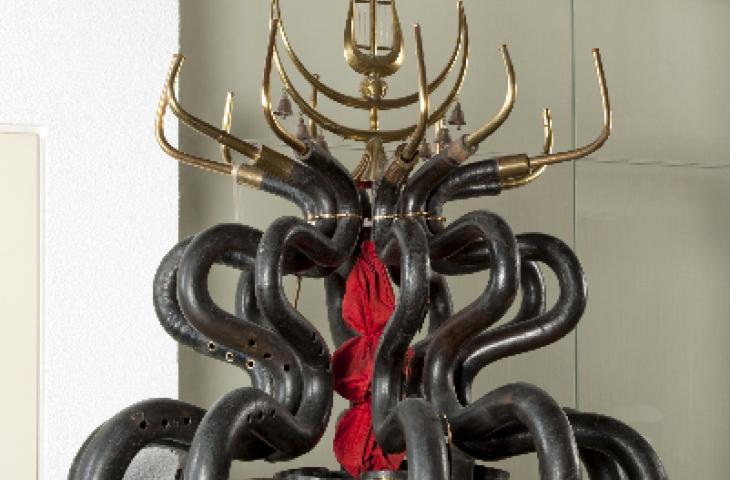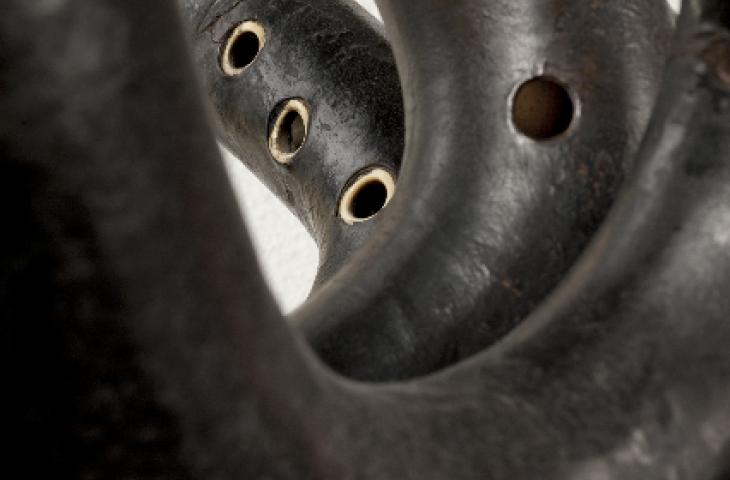Serpent chandelier

Serpent chandelier, Puurs, Antwerp, end of the 18th century or beginning of the 19th
Serpent chandelier

Serpent chandelier, Puurs, Antwerp, end of the 18th century or beginning of the 19th
This chandelier belonged to the town band of Puurs – a municipality in the Province of Antwerp – prior to the mim being able to acquire it around 1900. Originally, it comprised twelve serpents, but two were in a poor condition and are kept in the museum’s reserves.
A serpent is a wind instrument and takes its name from the serpentine shape of the tube, which is approximately 2.5 m long. It consists of two hollow halves held together by a black leather covering. Its mouthpiece is comparable to that of the tuba, and it has two groups of fingerholes. During the seventeenth century, the serpent was used chiefly to accompany singing in church and, in the eighteenth, began to serve as a bass instrument in bands. It fell into disuse with the arrival of the ophicleide and the tuba in the mid-nineteenth century. It is due to the Puurs band creating a chandelier from them that the instruments here have been preserved, albeit as a decorative rarity. They are mounted round a Turkish Crescent, or Jingling Johnny, with its typical elements of numerous small bells, a half-moon, a sun and a lyre. The mouthpieces, which were normally set at the top of the serpents, have been removed to make way for candles.